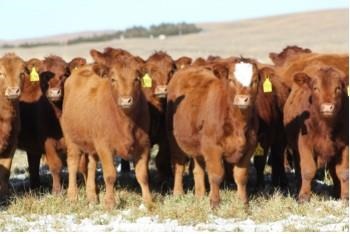This article is a summary of the 2017 Nebraska Beef Cattle Report “Effect of Heifer Development System on Reproduction and Subsequent Gain as a Pregnant Heifer.” Shelby A. Springman, Hazy R. Nielson, T. L. Meyer, Mike Kirby, Jim Teichert, and Rick N. Funston were the collaborators. Report summarized by Jay Jenkins, Nebraska Extension Beef Systems Educator

Bringing a bred replacement into the herd represents a significant expense for beef cattle producers. For those producing their own replacements, heifer development costs contribute directly to cow depreciation, which is one of the three largest expenses on many operations. Ranchers with lower cost per bred heifer have a competitive advantage when it comes to their ability to weather tough times in the cattle business.
This study looked at the effect of heifer development system on reproduction and subsequent gain and feed efficiency as a pregnant heifer.
Weaned heifers were divided into four groups from mid-November until estrus synchronization. All diets were balanced and, at a minimum, fulfilled the heifers’ needs for maintenance and growth. Heifers grazed 1) corn residue, 2) upland range, or were fed either a 3) high-energy diet in the feedlot, or 4) a low-energy diet in the drylot. All heifers where fed together in a drylot for MGA estrus synchronization, then were turned out together to summer pasture on warm-season dominated rangeland.
Both the range and corn residue grazed heifers gained less during development and were lighter at the time of A.I. than the heifers on the high-energy feedlot diet. The heifers fed the low-energy feedlot diet were intermediate.
When turned out to summer grass together after synchronized A.I., the grazed heifers outgained the feedlot heifers, with the corn residue heifers gaining the most and the hi-energy feedlot heifers gained the least. By final pregnancy diagnosis, the winter grazed heifers were similar weight as the feedlot fed heifers.
There was no difference in A.I. pregnancy percentage or final pregnancy percentage. They also found that development treatment did not impact feed efficiency as a pregnant first calf heifer.
Because of the costs of pasture and feed during this study, there was no difference in cost per bred heifer. The lack of impact of the different development systems suggests that ranchers are free to choose a system that best meets their needs and cost structure.
Source:unl.edu